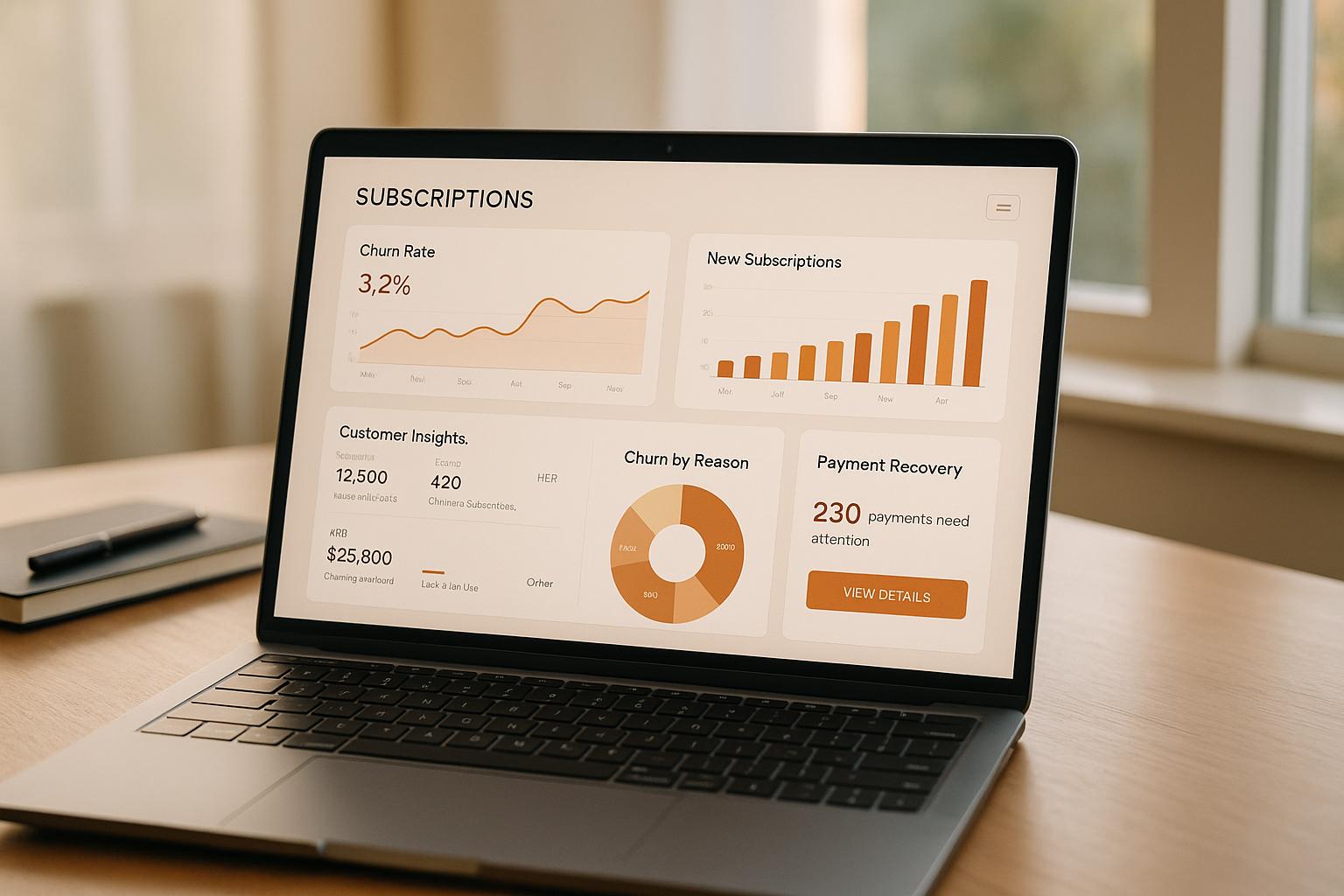Negotiating retail agreements with big retailers can be tough, but it’s doable if you understand the basics and come prepared. These contracts cover everything from pricing and delivery to product placement and performance metrics. The key is to align your product’s value with the retailer’s needs.
Top tips for success:
- Know your limits: Define pricing, volume, and payment terms in advance.
- Do your homework: Research the retailer’s product lineup, customer base, and market trends.
- Highlight your product’s value: Show how it boosts sales, attracts customers, and fits their strategy.
- Offer flexible pricing: Use volume-based discounts to encourage larger orders.
- Build long-term partnerships: Focus on collaboration, regular reviews, and strong support systems.
Avoid common mistakes:
- Don’t skip preparation - study the market and the retailer’s priorities.
- Don’t focus only on price - emphasize overall value like category growth and marketing support.
- Don’t ignore the retailer’s needs - align your offer with their goals for margins, inventory, and growth.
Retail Strategy - How To Handle Negotiations with Chain ...
Research Before Negotiation
Preparing thoroughly before negotiations can give you a stronger position and a clearer strategy.
Understanding Your Target Retailer
Start by examining the retailer's product lineup and market stance. Look for ways your product can fill gaps or complement their existing offerings.
| Analysis Area | Key Considerations | Action Items |
|---|---|---|
| Product Mix | Performance of categories, shelf space allocation, competing brands | Identify where your product fits best |
| Customer Demographics | Age, income levels, and shopping habits | Match your product to their customer base |
| Sales Performance | Growth rates in categories, seasonal trends | Plan the best timing for product launch |
Study their merchandising strategies to show how your product can strengthen their current selection. This research will help you prepare for setting clear negotiation boundaries.
Setting Clear Deal Limits
Before sitting down to negotiate, define your limits to ensure profitability and practicality. Focus on these key areas:
- Pricing Parameters: Determine your minimum price, factoring in production, logistics, marketing, and profit margins.
- Volume Commitments: Decide on maximum production and minimum order quantities based on your capacity, storage, and lead times.
- Payment Terms: Establish terms for payment schedules (e.g., 30–90 days), early payment discounts, and volume-based incentives.
These boundaries will guide your decision-making during negotiations and help you adapt to market trends.
Market Position Assessment
Evaluate the market and competitors to highlight what sets your product apart. Focus on these key factors:
| Factor | Assessment Criteria | Strategic Implications |
|---|---|---|
| Market Share | Leading brands, growth trends | Shape your positioning strategy |
| Price Points | Competitor pricing and profit margins | Define your value proposition |
| Distribution | Channel availability and exclusivity deals | Plan your market entry effectively |
Effective Negotiation Methods
When working with major retail chains, it’s all about strategy. A strong approach focuses on creating value for both sides and building partnerships that last.
Highlight Product Advantages
Start by showing how your product can help drive sales and attract customers - before diving into price discussions. Use these key points to make your case:
| Value Driver | How It Helps Retailers | Proof Points |
|---|---|---|
| Market Demand | Increases sales and foot traffic | Data showing high consumer interest |
| Category Growth | Boosts overall category performance | Trends and growth projections |
| Margin Potential | Delivers better profits per square foot | Margin comparisons with category averages |
| Brand Alignment | Enhances their market position | Customer demographic overlap analysis |
Flexible Volume-Based Pricing
Offer pricing options that adjust based on order volume while keeping profits intact. A tiered pricing structure works well:
| Order Volume (Units) | Discount | Extra Perks |
|---|---|---|
| 1,000-4,999 | 5% off | Standard terms (Net 30) |
| 5,000-9,999 | 8% off | Net 45 payment terms |
| 10,000+ | 12% off | Priority shipping, Net 60 terms |
Other ways to make your pricing model appealing:
- Set minimum order quantities to ensure efficiency.
- Offer flexibility for seasonal demand spikes.
- Provide early payment discounts to benefit both sides.
But remember, great pricing is just the start. Strong partnerships go beyond numbers.
Building Long-Term Partnerships
Show your commitment to shared growth by focusing on these key areas:
1. Performance Reviews
Meet quarterly to review metrics, discuss trends, and explore new opportunities. This keeps the partnership on track and shows you’re invested in its success.
2. Collaborative Planning
Work together on marketing campaigns, inventory strategies, and promotional schedules. Sharing insights and expertise strengthens the relationship and adds value beyond just supplying products.
3. Dedicated Support
Make life easier for your retail partners by setting up solid support systems:
- Assign account managers to handle day-to-day communication.
- Have clear protocols for supply chain issues and problem escalation.
- Offer ongoing training and resources to keep them informed about your products.
Reliable service and open communication are key to building trust and ensuring a successful partnership.
sbb-itb-97f6a47
Common Mistakes to Avoid
Negotiating retail agreements with major chains can be tricky. Certain mistakes can derail even the most promising deals. Avoiding these pitfalls is key to maintaining a strong position and securing long-term success.
Poor Preparation
Walking into negotiations without proper preparation weakens your position. It can lead to overlooking market trends and failing to address the retailer’s priorities.
| Preparation Gap | Impact | Prevention Strategy |
|---|---|---|
| Market Research | Can't justify pricing or terms | Study market trends and competitor strategies |
| Retailer Knowledge | Misaligned with retailer’s goals | Understand the retailer's strategy and category data |
Being well-prepared allows you to build a negotiation strategy that highlights the value you bring.
Price-Only Focus
Focusing solely on price can hurt your partnership and limit the potential for broader opportunities.
-
Highlight Overall Value
Showcase your product’s value beyond just cost. This includes:- Growth potential for the category
- Contributions to brand recognition
- Supply chain efficiencies
- Consumer insights you can share
- Joint marketing opportunities
-
Broaden the Agreement Scope
Structure deals that go beyond simple transactions. Consider:- Collaborative business planning
- Shared marketing investments
- Support for category management
- Access to your innovation pipeline
- Metrics that measure more than just sales
By focusing on these elements, you can build a strong, multi-faceted partnership.
Missing Retailer Needs
Ignoring what the retailer cares about most can derail negotiations. A successful deal aligns with their specific priorities.
| Retailer Priority | Key Considerations | Solution Approach |
|---|---|---|
| Margin Requirements | Profit targets and space ROI | Offer tiered pricing that supports profitability |
| Inventory Management | Turn rates and working capital | Suggest flexible minimum orders and safety stock |
| Category Strategy | Brand positioning and assortment gaps | Show how your products improve category performance |
| Growth Objectives | Market share and revenue targets | Provide a clear plan for mutual growth |
A great retail agreement addresses both immediate needs and long-term goals. By steering clear of these common mistakes, you’ll be in a much stronger position to negotiate deals that benefit both parties.
Agreement Structure and Comparison
Required Agreement Sections
Retail agreements should clearly outline pricing, payment terms, delivery details, and promotional responsibilities. Here's a breakdown of the key sections:
| Agreement Section | Key Elements | Purpose |
|---|---|---|
| Pricing Terms | Base pricing, volume discounts, promotional allowances | Define financial expectations clearly |
| Payment Structure | Payment schedules, discount opportunities | Establish cash flow guidelines |
| Delivery Requirements | Lead times, minimum orders, shipping terms | Set operational standards |
| Promotional Obligations | Marketing contributions, display requirements, ad support | Specify promotional commitments |
After outlining these sections, it's crucial to compare different contract types to find the best fit for your business needs.
Contract Comparison Tools
When choosing the right agreement structure, it's helpful to weigh the pros and cons of different contract types:
| Contract Type | Advantages | Disadvantages |
|---|---|---|
| Consignment | Lower upfront costs, more flexibility | Payments may be delayed, higher risks |
| Wholesale | Immediate payments, stable income | Requires maintaining higher inventory |
To make informed decisions, leverage market data and industry benchmarks. For more complex negotiations, consider consulting professionals listed in the Top Consulting Firms Directory to refine and optimize your agreement terms.
Conclusion: Main Points
Negotiation Success Factors
To succeed in retail negotiations, it's crucial to understand the retailer's needs and position in the market. This approach helps create agreements that benefit both parties. Here are some key factors to focus on:
| Success Factor | Strategic Impact | Implementation Focus |
|---|---|---|
| Understanding Retailer Needs | Creates tailored outcomes | Research and align with retailer goals |
| Highlighting Product Benefits | Showcases how your product stands out | Communicate clear advantages |
| Volume-Based Solutions | Encourages larger purchase orders | Offer scalable pricing incentives |
| Building Long-Term Partnerships | Strengthens ongoing relationships | Prioritize support and relationship growth |
By focusing on these areas, you can build agreements that are not only effective but also long-lasting. If these elements feel too complex to manage alone, seeking expert advice can be a game-changer.
Getting Expert Help
Many suppliers turn to experienced advisors for help navigating complex retail negotiations. These professionals bring valuable insights and strategies to the table, helping you avoid costly errors. They typically specialize in:
- Strategic partnerships with retailers
- Structuring contracts to minimize risks
- Enhancing market positioning and planning for growth
- Financial planning tailored to retail agreements
With their expertise, you can access proven techniques and frameworks to improve your chances of securing favorable terms with major retailers. A skilled consultant can provide the competitive advantage you need.
FAQs
What are the best strategies to showcase my product's value and meet a retailer's needs during negotiations?
To effectively align your product's value with a retailer's needs during negotiations, focus on understanding their priorities and demonstrating how your product meets those goals. Start by researching the retailer's target market, sales trends, and pain points. This will help you tailor your pitch to address their specific needs.
Highlight your product's unique selling points (USPs) and provide data or case studies that showcase its success. For example, share sales figures, customer reviews, or market research that proves your product's demand and profitability. Be prepared to discuss pricing, promotional strategies, and how your product can drive revenue for their stores.
Lastly, maintain open communication and be flexible. Retailers value partnerships that are collaborative, so showing a willingness to adapt to their requirements can strengthen your position in the negotiation process.
How can I negotiate favorable payment terms and volume commitments in my retail agreement with a major chain?
To negotiate favorable payment terms and volume commitments with a major retail chain, it's essential to approach the discussion with preparation and clarity. Start by researching the retailer's typical agreement structures and understanding their priorities, such as product margins, delivery schedules, and sales expectations. This will help you tailor your proposal to align with their goals while advocating for your needs.
When discussing payment terms, aim for options that improve your cash flow, such as shorter payment cycles (e.g., Net 30) or discounts for early payments. For volume commitments, present data that demonstrates your product's demand and reliability to help secure minimum purchase guarantees or exclusivity agreements. Being flexible and offering value, such as promotional support or co-marketing efforts, can also strengthen your position during negotiations.
If you're new to these types of negotiations or need expert guidance, consider consulting with professionals who specialize in retail agreements. Resources like the Top Consulting Firms Directory can connect you with firms experienced in strategic management and business growth to help you navigate these complex discussions effectively.
How can I establish a strong, long-term partnership with a major retailer after finalizing the initial agreement?
Building a lasting partnership with a major retailer requires consistent effort and mutual value creation. Start by delivering on your promises - ensure your products meet quality standards, are delivered on time, and align with the retailer’s expectations. Clear communication is key; regularly update the retailer on performance metrics, sales trends, and any potential challenges.
To strengthen the relationship, look for opportunities to collaborate. This could include co-marketing campaigns, exclusive product launches, or joint efforts to improve customer experience. Additionally, remain adaptable to the retailer’s evolving needs and be proactive in suggesting solutions that align with their goals. A long-term partnership thrives on trust, reliability, and shared success.


